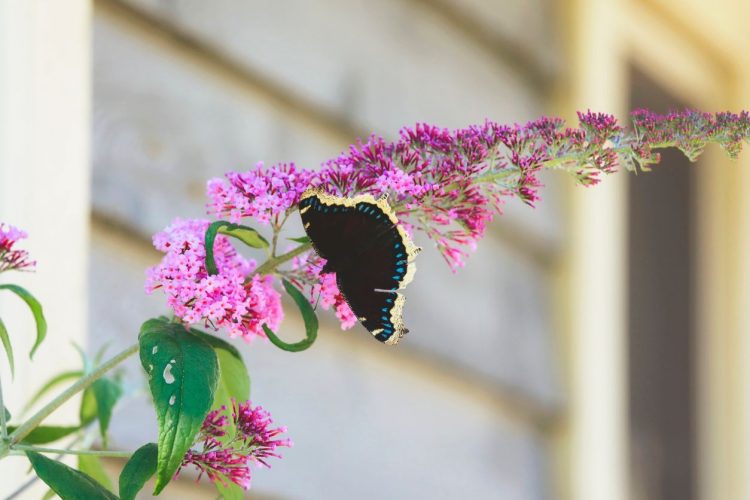While the focus of your summer garden might center on bright blooms and healthy veggies, with a few simple strategies, you can also attract more butterflies to your outdoor space.
Not only are butterflies critical for pollination, they will add a beautiful element to your yard and delight both children and adults alike. Landscaper Harry Bodell at PriceYourJob.co.uk offers these simple, effective steps to help turn your garden into a haven for these colorful pollinators.
Plant the right flowers. Since flowers provide nectar, the primary food source for butterflies, planting the right varieties is essential. According to Bodell, butterflies are drawn to bright colors like red, orange, yellow and purple. Planting flowers that include sweet nectar, have an easily accessible shape and a potent fragrance will also appeal to butterflies. Opt for varieties such as aster, lavender, milkweed, sage and sunflowers.
Keep blooms going from spring through fall. Bodell explains that butterflies start appearing in spring and leave again in the fall once flowers are sparse and temperatures drop. This means you will need to plant a variety of perennials that flower at different times, as well as long-lasting annuals so that you keep blooms going into fall.
Get rid of dead blooms. Butterflies thrive on fresh flowers, so be sure to deadhead plants to encourage new bloom growth and, therefore, more nectar.
Add ‘host plants.’ In order to have butterflies, you’ll need caterpillars. According to Bodell, butterflies lay their eggs on host plants, which have leaves that caterpillars feed on. Ideal host plants include, dill and fennel, spice bushes, milkweed and asters.
Avoid harsh chemicals. Butterflies are negatively impacted by harsh chemicals, so when it comes to fertilizer, lean toward organic options, including common household items like coffee grounds, eggshells, grass clippings and banana peels.
Make some sugar water. While butterflies are hopefully getting enough nectar from your flowers, you can also enrich their diet with a solution of three teaspoons of sugar per cup of water, then boiling the mixture. Once it has cooled down, add it to a butterfly feeder in your yard.
Provide plenty of sunlight. Butterflies need plenty of sunlight and can get chilly without it. So make sure you plant your flowers in the sunniest location possible. You can also add sun-basking stones to your yard, says Bodell, placing them in sunny locations among your flowers. Butterflies will land here to warm up.
Provide shelter. Buy a premade butterfly house or create a makeshift version with a few pieces of wood. This will help protect butterflies from predators like birds, reptiles and other insects.











